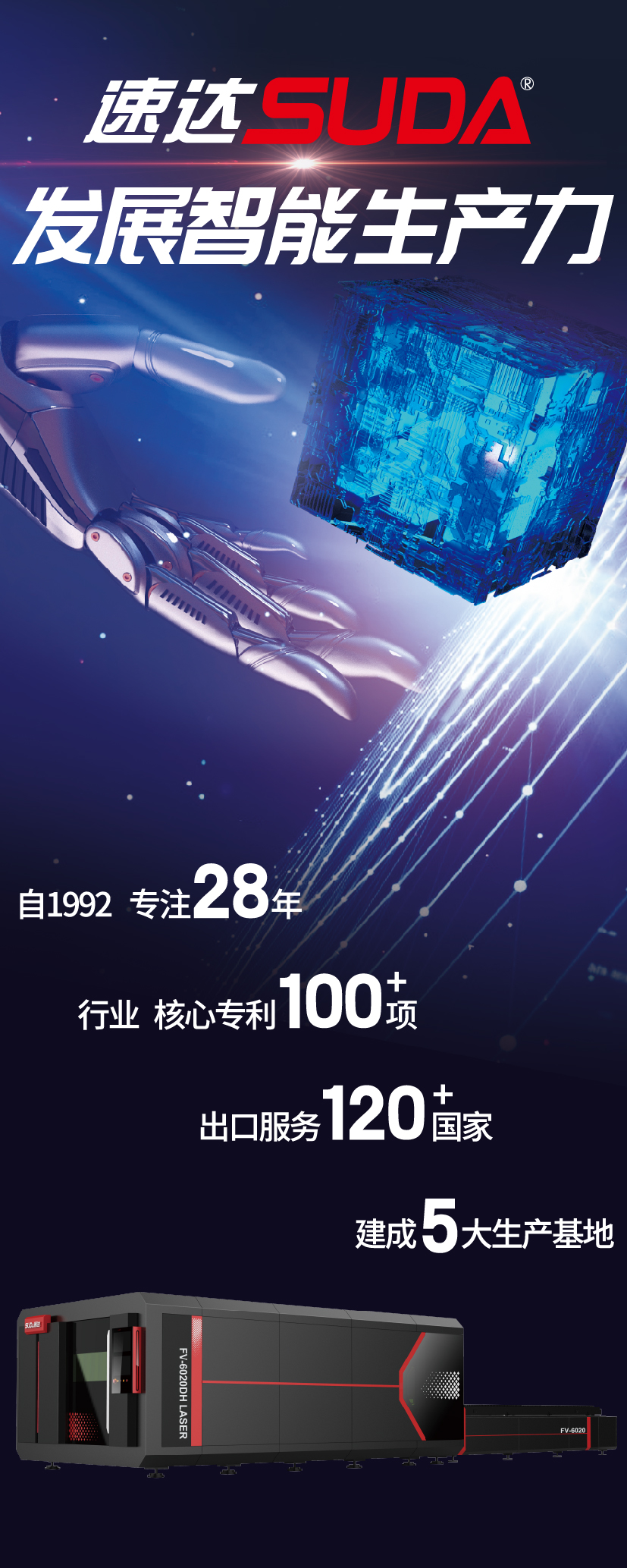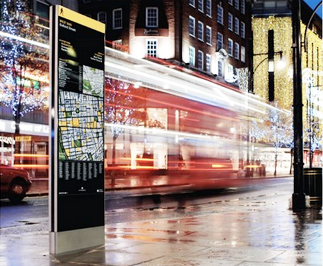
Over the last 20 years, many urban areas—from small-town main streets to the downtown districts of the world’s largest cities—have seen new wayfinding and identity systems installed to ease navigation, enhance their brand and/or reinforce key destinations. One of the reasons for a heightened interest in effective wayfinding is the desire to enhance jurisdictions’ economic sustainability. In this context, sign systems have taken on a revitalized importance.
过去20年来,许多小城镇的主要街道摇身一变成为了世界上最大的闹市区,其中的原因之一要归于安装了城市导视系统和身份识别系统,这种系统有效地为城市进行导航,提升了城市的品牌文化,也加强了重点目的地的提示。政府提高有效的寻路方式的的目的之一是希望加强管辖权,实现经济可持续性,在这种情况下,标识导视系统的重要性日益凸显。
Some of these wayfinding projects have developed to the point where they are integrated into local traffic control standards and accepted as part of ongoing financing programs. Yet, there is often little information available to signmakers, urban planners and city officials who want to develop new sign programs and learn from those cities that have already been successful. This information is crucial, given such projects may take two years from conception to installation.
其中一些项目已经被纳入了地方交通标准管制中,并被接受为持续融资计划的一部分。然而,即使他们想要开发新的标识方案,却很少有信息可供给标识行业的专业人士、城市规划者和城市官员,他们只能从那些已经取得成功的城市中学习和效仿,获得至关重要的信息,因为这些项目从最初的设计概念到安装实施,整个过程可能需要花费至少两年的时间。
The case for wayfinding signs
城市导视系统的迹象
Visitors often navigate cities these days using smartphone apps that find destinations—and information about them—within seconds. With such tools at their disposal, they may well wonder if physical wayfinding elements are even necessary anymore.
旅游者来到一座城市,会经常使用智能手机的应用程序来浏览整个城市面貌,这些应用程序可以在几秒钟之内帮助他们找到目标地址,有了这样的智能工具,他们可能会怀疑这样的城市导视系统是否有必要建立和部署。
Municipal wayfinding systems, however, serve important roles well beyond the basic needs for navigation, identification and information. Monuments, directional signs, interpretive panels, directories and even regulatory signs can all enrich the urban environment experience.
然而,市政寻路系统除了导航和身份识别信息的基本功能以外,实际上还起着重要的作用。 纪念碑、方向标识,解释面板,甚至监管标识都可以丰富城市的环境经验。
For one thing, signs define a sense of place. Urban geographer Ken Lynch suggests all cities have their own language, which residents and visitors can ‘read’ in their streets, landmarks, districts and gateways. Lynch’s research method of testing city legibility through personal cognitive maps has shown the effectiveness of successful wayfinding systems.
一方面,标识象征着一种地位感。城市地理学家 Ken Lynch建议所有城市都应该有属于自己城市的语言和内涵,居民和游客可以在街道、任何地方来感受和欣赏城市的风景和文化。 Ken Lynch通过个人认知图和测试城市易读性的研究方法,证明了成功的城市导视系统的有效性。
They can also highlight complementary destinations, bringing greater awareness to lesser-known landmarks that may not be included in apps. In Lancaster, Penn., for example, the installation of a citywide wayfinding system in 1999 led to increased name recognition for secondary destinations, including the city’s Art Museum and Central Market.
此外,城市导视系统还可以突出互动目的地,将人们不太了解的地标,融入到城市地标应用中。例如,1999年,在兰开斯特宾夕法尼亚州,安装了一个全市范围的寻路系统,促使了次要目的地的名称增加,包括城市的美术馆和中央市场。
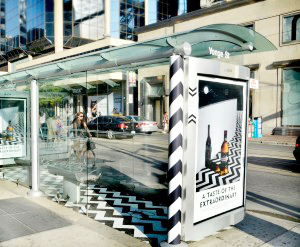
Even when drivers use Global Positioning System (GPS) devices, vehicular wayfinding signage is beneficial, as locating the destination is not the only key issue. Signs are also used to control traffic circulation patterns and consistently identify parking lots and garages. By providing clear directions to drivers at strategic locations, signs can reduce confusion and distraction and help create safer conditions.
即使驾驶员习惯使用全球定位系统,车辆寻路标牌也是有益的,因为定位目的地不是唯一的关键方法。此外,标识也用于控制交通流量,并识别停车场和车库的情况,通过向战略位置的司机提供明确的指示,减少混乱和分心,帮助创造更安全的条件。
Finally, in cases where individual organizations within the same district implement unique sign systems, particularly in terms of specialized banners, redundant neighbourhood identification and private interpretive efforts, the urban environment can appear disjointed and disorganized. A well-defined, comprehensive municipal wayfinding system will help create a consistent urban brand, a sense of organization and a perception of quality for the city and its amenities.
最后,如果在同一地区实行了一种不够明确的标识系统,冗余的社区识别会给城市环境造成脱节和混乱。一个明确、综合的市政寻路系统将有助于创造一个和谐的城市品牌,从而提升城市的组织感和设施的质量感。
System elements
系统组成部分
A wayfinding system has many parts that fit together, including colours, typography, shapes, logos, materials and nomenclature.
城市导视系统有很多部分组成,包括颜色、排版、形状、标识、材料和名称。
Gateway signs define entry to a distinct place, with its own identity. Regional gateways may apply to a province, county, heritage area or economic zone (e.g. industrial or commercial corridor). City gateways, which identify a city or town, may lead to district and neighbourhood gateways (e.g. Chinatown) and area identification gateways for less defined areas with distinct culture or commerce (e.g. fashion district) or political importance.
不同区域的标识有各自的特点,象征着该区域的身份和独特性。区域网关适用于省,县,遗产地区或经济区,识别城市或城镇的城市网关包括邻里网关和区域识别网关,用于明确具有不同文化、商业、政治重要性的地区。
The aforementioned vehicular wayfinding signs are accompanied by pedestrian wayfinding signs, maps and directories. Of course, street name signs, regulatory signs, street furniture, public art, civic banners and informational kiosks also support the notion of an overall wayfinding system.
当然,街道标识、规管标识、公共艺术、公民横幅和信息亭也支持城市导视系统的总体发展。
Getting started
入门
A great deal of preparation is required before establishing a wayfinding plan and unveiling a design concept.
在建立城市导视系统计划和设计理念之前,需要做大量的准备工作。
A new sign system, like a bridge or a highway, will affect a number of stakeholder constituencies. Signmakers will benefit if these constituencies are consulted from the outset of a project. They may include a steering committee, management committees, task forces and general stakeholders, such as political and community leaders, funding agencies and the media.
新的城市导视系统制度,将影响一些利益相关方的选区。一个新项目从一开始就征询这些选区有关情况的话,标识专业人员就会受益,之后开展的工作就会减轻很多麻烦。选区可能包括一个指导委员会、管理委员会和一般利益相关者,利益相关者可能是政治和社区领导人、资助机构或媒体。
The project team will refine the project’s scope and strategic approach, which may lead to preliminary design descriptions and recommendations. The planning process will include research of best practices, pedestrian and vehicular circulation routes, field conditions and existing sign messaging protocols, as well as surveys of residents, visitors and other stakeholders, before outlining a strategy and early design concept report.
项目组将完善项目的范围和战略方法,从而对项目进行初步设计和建议。在制定战略和早期设计概念报告之前,规划过程将包括对行人和车辆循环路线的研究,现场条件和现有标识信息的考察,以及对居民、访客和其他利益相关者的调查。
There is often a great deal of pressure to complete a wayfinding program with one project, but there are many advantages to a multi-stage approach. Developing the program in one location, for example, allows a ‘trial run’ for approval, fabrication and implementation and testing.
通过一个项目来完成所有的城市导视系统计划是有一点困难的,所以需要多阶段进行开展,可以将开发程序通过试运行模式来制造、实施和测试。
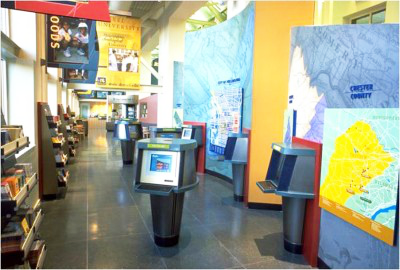
System financing
系统性融资
It is also important for signmakers that the process secures financing. Politicians and community leaders can help secure support and defend decisions. Leading sources of funds include grants, donations, business improvement areas (BIAs) and government funds at the municipal, provincial and/or federal level.
同样重要的一个流程是要确保有足够的融资。政府和社区领导可以对该项目提供支持和维护,并能做出一些决策。资金来源包括在市、省的赠款、捐款、业务改善领域和政府基金。
In Calgary, for example, a new downtown wayfinding system (see Sign Media Canada, July 2013, page 38) is primarily being funded through downtown improvement and beltline community investments. These funds are generated through downtown licensing fees and developer contributions that are earmarked for public-space improvement projects.
例如,在卡尔加里市,一个新的市中心寻路系统主要通过市政府和社区居民来资助,市政府许可费用和开发商捐款也用于公共空间的项目改善。
In Toronto, meanwhile, Kramer Design Associates (KDA) and Astral Out-of-Home have integrated a program under city oversight where commercial advertising is used to fund street furniture and wayfinding signage.
同时,在多伦多,Kramer 和Astral Out-of Home设计协会已将带有商业广告性质的寻路标牌整合到城市监管项目中了。
Meeting regulations
会议规章
Another challenge is managing the regulatory framework. One of the reasons for the recent success of large-scale urban wayfinding systems is many governments have updated their codes over the past 20 years, but roadblocks can still exist.
在建设城市导视系统过程中,另一个挑战是监管管理框架。城市大型寻路系统取得成功的原因之一是,许多国家的政府在过去20年间不断更新道路守则。
The unfortunate tendency of sign codes is to specify blanket rules whether signs are in urban, suburban or rural locations. In some cases, for example, codes require wayfinding signs to be too large or too far separated from their points of reference. These regulations may focus on the needs of drivers on roads with high speed limits, but are mismatched for low-speed, pedestrian-oriented areas.
同时,符号代码的设立会给城市、郊区或农村地区带来一定的限制。例如,代码要求寻路标识太大或离参考点太远,这些规定可能侧重于司机在高速道路上的需要,但对于低速行人导向区域而言是不合适的。
In other cases, codes require gateway signs to be too small and dim. These zoning codes may be designed to limit advertising, but they can lead to legibility issues for people trying to find destinations.
在其他情况下,代码要求网关标识小而暗淡。这些分区代码可能旨在限制广告,但它们可能会减弱试图找到目的地人的易读性。
While signmakers might seek a variance or legal exception for one or a few signs, a citywide wayfinding program may require developing a whole new sign code, based on analysis of specific conditions, sound research, case studies and observations of other jurisdictions’ successful regulatory framework. Further, variances often undermine the validity of a code and can make it harder to expand a program over time.
虽然标识制定者可能会针对一个或几个迹象,来寻求差异,但城市寻路计划可能需要根据具体情况进行具体分析,要严格的根据案例研究和其他司法管辖区成功的监管框架来制定全新的城市导视系统。此外,差异通常会破坏代码的有效性,阻碍程序扩展。
Design
设计
Before the design phase, there should be a ‘design brief,’ outlining the goals and scope of the project. Then, the design phase will usually comprise two parts: (a) schematic/concept design and (b) design development. While these can be combined in some small communities where budgets are restrictive and the wayfinding system simple, the two-part approach is advisable for large urban areas and complex projects with multiple stakeholder groups.
在设计阶段之前,应该做一个“设计简报”,概述项目的目标和范围。接下来,设计阶段通常包括两部分:(a)原理图/概念设计和(b)设计开发。这两个部分结合,不管是对于一些小社区的简单寻路系统,还是大型城市和具有多个利益相关者群体的复杂项目来说,都是可取的。
The schematic/concept design phase references feedback from surveys and analyses when developing concepts for sign placements, sizes, materials, standards and costs. This allows an opportunity to revisit the project’s original goals.
原理图/概念设计阶段在设置标识的位置、尺寸、材料和成本时,应要进行广泛的调查,得到群众的反馈,在反馈中进行分析,这样才能重新审视,不会脱离项目的原始目标。
The design development phase uses typography, colours, attachments and other specific details to turn the early elements into fully realized concept. It is important to ensure these details receive full regulatory approval before the project moves forward.
设计开发阶段使用的排版、颜色、附件和其他具体细节,都要被转化为完全现实的概念。在项目进展之前,确保这些细节得到充分的监管和审批是很重要的。
To test the designs for proper scale, photographic montages and temporary mock-ups should be developed early in this stage.
为了对设计进行适当规模的测试,在这个阶段应该使用蒙太奇方法和建立临时模型进行预演。
Material selection
材料的选择
Wayfinding signs must withstand a great deal of wear and tear, including the effects of air pollution, vandalism and the sun’s ultraviolet (UV) rays, so durable materials are required. Measuring longevity should be an important part of the material specification process.
城市导视系统需要承受大量的磨损,包括空气污染、破坏行为和太阳的紫外线(UV)的,因此,在建造时需要选择耐用的材料。测量使用寿命是检验材料的关键。
Paints and coatings, generally, show wear and tear most visibly over time. They should therefore be chosen based on the sign system’s intended lifespan, which may range from one to 20 years.
涂料通常会随着时间而显示出明显的磨损。因此,它们应根据标识系统的预期寿命进行选择,期限在1至20年之间。
Digitally printed graphics have improved greatly in durability, but can also fade under intense environmental conditions. Some wayfinding signs are now printed on high-pressure laminates, while others protect vinyl with a weather-resistant coating.
一些寻路标识被印在层压板上,另一些用了涂层保护乙烯基材料,虽然使数字印刷图形的耐久性大大提高了,但在强烈的环境条件下还是会褪色的。
Aluminum, steel, wood, stone and concrete can all be used as long-lasting substrates, but durability falls not just on these materials, but on their connectors, which often fail first.
铝、钢、木、石和混凝土都可以用作基材,耐久性不仅体现在这些材料上,同时也体现在连接器上。
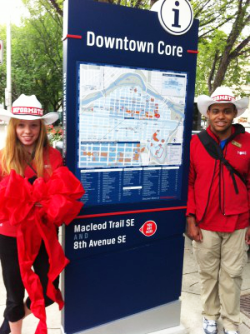
A modular system might include prefabricated boxes, removable messages and standard connectors to allow frequent updates, but multiple parts can also mean they are easier to vandalize.
城市导视系是模块化的,包括预制箱、可拆卸消息面板和标准连接器,这些都是可以进行频繁更新的,同时也意味着它们更容易被破坏。
Fabrication
制造
The construction of wayfinding elements can be the most challenging and stressful phase of the project, not only because the planning and design work must be translated into actual built, installed and maintained signs, but also because civic projects often face fabricator selection rules that can complicate documentation and administration.
寻找元素的建设可能是项目中最具挑战性和压力的阶段,规划设计的工作不仅要转化为实际的建造和安装,项目还经常面临制造商的对接问题,使其复杂化。
A prototype phase is necessary as part of the overall bidding process, especially for public bids, to ensure all entities understand the project. In Banff, Alta.
作为整体投标过程的一部分,特别是公开招标,需要一个原型阶段,以确保具体了解项目的细节。
Once the chosen sign fabricators have begun work, the wayfinding project team, designers, managing committee and key officials can move on to the administration, monitoring and approval of construction. Communications will remain vital regarding electrical components, deep foundations and/or structural work.
标识制造商一旦开始工作,项目组、设计师、管理委员会和重要领导都要进行施工的管理、监督和批准。值得注意的是,通信对电气元件和结构性工作是至关重要的。
Installation
安装
Any final installation issues should also be resolved before closing the fabrication contract, reviewing the completeness and quality of the installed signs, as well as any safety issues that may not have been foreseen at the planning and design phases.
在检查标识的完整性和质量,以及规划和设计阶段可能出现的安全问题之前,还应该解决安装问题。
Additional testing can inform further project development. It is important to check there are enough wayfinding elements for the entire city and the maintenance program will be adequate. The final review should be incorporated into guidelines for ongoing expansion, management and maintenance, ensuring any future design decisions are aligned with the actual fabricated, installed and tested signs.
附加测试可以进一步提供项目开发,最终审查应纳入管理和维护的准则中,确保未来的设计决策与实际的制造、安装和测试效果相一致。
System management
系统管理
From regular cleaning to repairs and replacements, maintenance is an ongoing issue, with costs often ranging from seven to 15 per cent of total capital expenditures on a yearly basis.
城市导视系统从定期清洁到修理、更换,维护是一个持续的过程,成本通常在每年总资本支出的7%至15%之间。
With this in mind, sign shops should strive to make maintenance as easy as possible for their clients. Elements that will require ongoing management should be easy to open and take apart, while those receiving minimal maintenance should have few removable connections. Lighting will require more extensive maintenance than reflective, non-illuminated signs.
考虑到这一点,标识商店应努力为客户进行维护,将需要持续管理的元素分开,将那些接受较少维护的元素连接起来。此外,照明标识将需要比非照明标识得到更广泛的维护。
System management should also respond to area-specific hazards. A sign downtown might be vandalized, while one in an industrial area is more likely to suffer vehicular damage.
系统管理也应针对具体地区的灾害,做一个有效的应对方案,市区的任何一个标识可能会被突发性地破坏。总之,城市导视系统对一个城市来说至关重要,因此,它的部署和实施需要更精心的设计。







